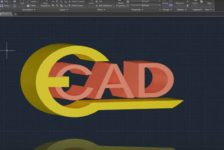Last post, I tried to get after demonstrating the intangibles that make you desirable as an individual in addition to the projects in your portfolio. Today, I think it is important to look at one little detail that makes a big difference. A few little letters after your name could represent your membership in an organization, whether or not you are licensed as a professional, or that you have earned an advanced degree or other certification.
But who cares, right? We’re all so brilliantly creative, we don’t need that. As Landscape Architects, we have the responsibility to do good design work that respects the environment, protects human health and safety, and improve the quality of life for all living things! Who needs to take another stupid test? You do.
Whatever your talents are, having this “alphabet soup” after your name on business documents (cards, memos, email, etc) serves as a front line of information about you as a professional. Job titles are less important these days than ever before – maybe your card says “associate”, or “hardscape guru”, but the job of a “designer” at one firm could be about the same as being a “project manager” at another. It is different with these small but meaningful abbreviations. Consider the following things that having these credentials says about you:
- That you’re dedicated to the profession enough to keep learning and doing extra work in addition to your job.
- That you’re smart enough to earn them.
- That you’ve made a personal and financial commitment to continuing education, and to your field.
- That you provide additional value to your employer or your own company. Credentials are marketed by firms. For example, if a company can say that all of their employees are LEED AP’s, that demonstrates to their clients a strong emphasis on environmental issues. It also lets the client know that no matter who in the company works on their project, they’ll be on the same environmental page…..why do we care? Because our clients ALSO use credentials for marketing purposes….they sell whole housing developments and commercial buildings based on this stuff. Clients care, and so should you.
- Municipalities are requiring them for projects! Here in the Bay Area, LEED AP and BFQP certifications for projects are being folded into municipal ordinances as required for a great variety of projects. If green building practices of some sort aren’t actually required where you are practicing yet, just wait a moment….they will be soon.
If that isn’t enough, I have more reasons to start working towards earning additional credentials:
- Because your talent is invisible. People hiring you can look at your portfolio and try to guess at your skills…..but there’s always the unknown of how much of the work you actually did. Having credentials is a signal that others can understand. They may not make you a better designer, but at least they are easy to compare. Investing in yourself in this way helps others to feel a level of comfort investing in you as well.
- Having them increases your chances to get on project teams. Any company would want their LEED AP to work on the LEED project instead of the employee who isn’t an AP.
- Some credentials will add your name on searchable databases. That is free marketing for you – plus the time and expense of earning the credential, of course.
- It shows an interest in an emphasis. If the environment isn’t your bandwagon, you can always get credentials in something else like green roofs or horticulture therapy.
I can’t tell you if the time and expense will pay off well enough. What I can tell you is that in this time when many of us have more free time than we’d like, this is one good way to stay viable. If you don’t value your career enough to earn some credentials, then I am sure the people who did will be more than happy to leave you in the dust.
Thanks for listening,
Jennifer de Graaf, PLA, LEED AP, BFQP
p.s. Next post, I will share the latest on the RLA/PLA/LLA debacle.
FYI abbreviations in the image are:
LEED AP: LEED Accredited Professional
CPTED: Crime Prevention Through Environmental Design
SITES: (formerly SSI) Sustainable Sites Initiative
EDAC: Evidence-based Design Accreditation Certificate
BFQP: Bay Friendly Qualified Professional
Photo credit for long eared owl: http://www.flickr.com/photos/tasshu113/4956888274/
Published in Blog










